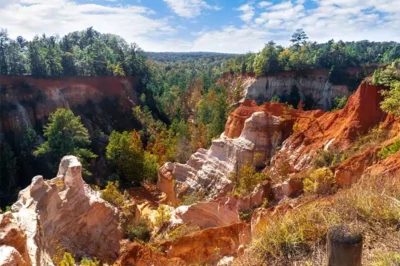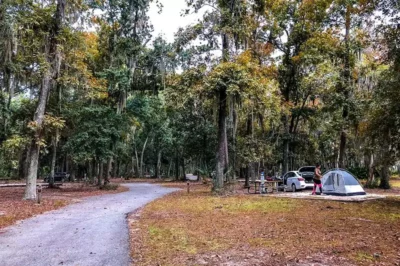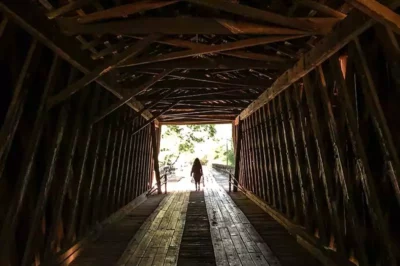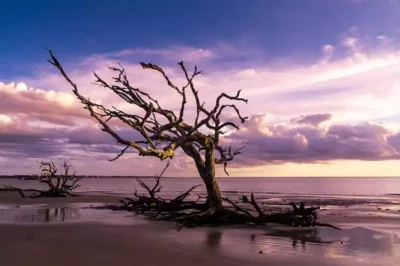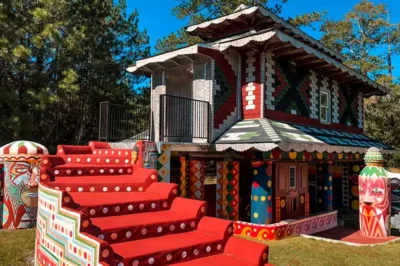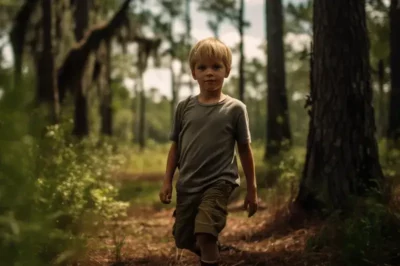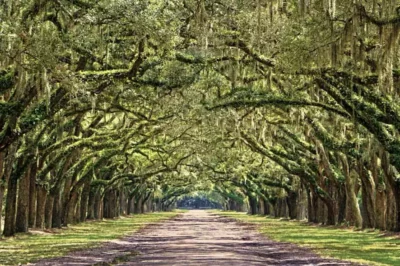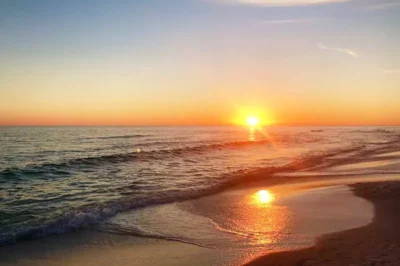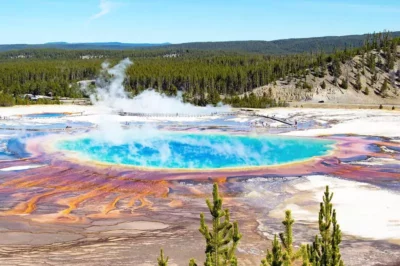Bonaventure Cemetery: Where Time Stands Still in Savannah
Part of the culture of sightseeing in Savannah is cemeteries, ghosts and fairies. Ghost tours are organized at night. So cemetery tours are a must in Savannah. Bonaventure Cemetery is the oldest cemetery and the one we visited, but there are other cemeteries around.
Nestled within the alluring Southern charm of Savannah, Georgia, the cemetery stands as a serene testament to the passage of time. As if whispering secrets of the past, the cemetery is a treasure trove of tales waiting to be discovered.
Initially established as a plantation in the early 1800s, Bonaventure Cemetery transformed into a public resting place in 1868, embracing the lives of many remarkable individuals within its verdant embrace.
Famous People Buried at Bonaventure Cemetery
In fact, cemeteries like these play an important role in getting to know the city. You can see love, success, respect, kindness, actors, captains, generals, singers, and the graves of Mercer.


Hundreds of years of Savannah’s history are buried under the Spanish Moss, the moss-like Spanish Moss on the oak trees. No matter what cemetery it is, you also feel that you are one click closer to death. As in every cemetery, it is definitely a trip that increases one’s awareness.
Johnny Mercer (1909-1976) – A son of Savannah, Mercer was born in Savannah. Johnny Mercer’s artistic prowess as a lyricist, composer, and singer propelled him to fame.
With an astounding legacy of more than 1,500 songs, he co-founded Capitol Records and won four Academy Awards for his work in film music. The tranquility of the cemetery now surrounds him, as he rests beneath the shade of Georgia pines. Mercer is buried in Bonaventure Cemetery.
Conrad Aiken (1889-1973) – This Pulitzer Prize-winning poet, novelist, and critic found inspiration in the haunting beauty of the cemetery. Aiken’s grave, marked by a simple bench, invites visitors to sit and reflect on the profound connection between life, death, and the power of the written word.
Josiah Tattnall III (1795-1871) – A prominent figure in both politics and the military, Commodore Josiah Tattnall III’s distinguished career included serving as a US Congressman,
Governor of Georgia, and a Confederate naval officer during the Civil War. His gravesite, adorned with an imposing monument, is a silent reminder of the complex and storied history of the American South.
Bonaventure’s Natural Beauty and Landscape
Bonaventure Cemetery’s natural beauty and landscape effortlessly weave a spellbinding tapestry, where the living world seamlessly blends with the world of eternal rest. The captivating scenery invites visitors to embark on a journey of both solace and wonder, reflecting on the fragility and resilience of life. It is truly one of the most beautiful and beautiful cemeteries.
The enchanting, ancient live oak trees stand sentinel over the cemetery, their branches draped with ethereal Spanish moss that sways gently in the breeze, as if whispering the secrets of days gone by. Amidst these trees, the beauty of Bonaventure unfolds in all its splendor.
Amidst these majestic giants, vibrant bursts of color beckon as azaleas, camellias, and other blossoms paint the landscape in a palette of life-affirming hues. Together, the flora and the towering trees create a serene sanctuary where nature and history intertwine.

The Wilmington River, flowing gracefully alongside the cemetery, provides a breathtaking backdrop that further enhances the tranquility of Bonaventure. Its scenic bluff of the Wilmington, bluff overlooking the Wilmington River, and bluff of the Wilmington River offer unparalleled views and a sense of serenity.
In addition to its picturesque setting, the cemetery has earned a reputation as an arboretum, showcasing a diverse collection of tree species, some of which date back centuries. These living monuments not only provide a habitat for local wildlife but also serve as reminders of the importance of preserving our environment for future generations.
The natural beauty and landscape of the cemetery beckon visitors to slow down and appreciate the fragile, fleeting moments of life, while also offering a profound sense of peace amidst the timeless embrace of nature.
Art and Symbolism in Bonaventure Cemetery
The art and symbolism within the cemetery transcend mere decoration, offering a glimpse into the beliefs, values, and emotions of those who have come to rest there. The statues in Bonaventure Cemetery are particularly noteworthy, contributing significantly to its artistic heritage
The cemetery’s monuments, headstones, and sculptures bear witness to a rich tapestry of artistic expression, reflecting on the human experience and the mysteries of life and death.
Victorian-era headstones and monuments are abundant throughout Bonaventure, showcasing intricate craftsmanship and ornate designs. These elaborate memorials serve as a testament to the love and respect for the departed and provide a unique window into the cultural and social customs of the time.

Symbolism plays a significant role in the funerary art of the cemetery. Various motifs carry specific meanings, often intended to provide comfort, evoke memories, or convey sentiments about the deceased. Some common symbols include:
- Angels and Cherubs: These celestial beings often signify protection, guidance, or the divine. They may be depicted watching over the deceased, comforting mourners, or guiding souls to the afterlife.
- Draped Urns: Symbolizing the soul’s journey from the mortal realm to the celestial sphere, draped urns represent the veil between life and death. The presence of an urn on a monument signifies the ashes of the deceased and the eternal nature of the soul.
- Flowers and Plants: Various flowers and plants carry specific symbolic meanings in funerary art. For example, roses symbolize love and beauty, while lilies represent purity and resurrection. Ivy, often found intertwined with other elements, symbolizes friendship and eternal remembrance.
The iconic Bird Girl statue, which once graced the pages of John Berendt’s “Midnight in the Garden of Good and Evil,” is a prime example of the emotive power of art within the cemetery.

Although the statue has been relocated to the Telfair Museum for preservation, its image remains synonymous with the mystique and allure of Bonaventure.
Cemetery Hours
Bonaventure Cemetery is open daily to visitors. The hours of operation are from 8:00 AM to 5:00 PM. It’s essential to plan your visit within these hours to ensure you have ample time to explore and appreciate the cemetery’s beauty and history.
Bonaventure Cemetery today remains a cherished destination for those seeking to connect with Savannah’s rich history.
Guided Tours
There are several guided tour options available for those interested in learning more about the cemetery’s history, art, and notable residents. Professional tour guides offer a wealth of knowledge and insights that can enhance your experience.
Taking a tour or participating in Bonaventure Cemetery tours allows for a deeper understanding of the site. Many visitors enjoy walking through the cemetery, and there are free guided tours available.
Additionally, you can embark on a specific tour of Bonaventure Cemetery or join one of the many tours of Bonaventure to learn about its fascinating past.
Some tour companies offer walking tours, while others provide trolley or van tours, depending on your preferences and mobility needs. You can find various tour operators online or through the Savannah Visitor Center.
Bonaventure Cemetery in Popular Culture
Bonaventure Cemetery’s ethereal beauty and captivating history have long been a source of inspiration for artists, writers, and filmmakers, propelling it into the realm of popular culture. Its hauntingly beautiful ambiance has contributed significantly to this allure.
The cemetery’s most famous connection is with John Berendt’s bestselling book, “Midnight in the Garden of Good and Evil.”
This non-fiction work, often referred to as a “Savannah story,” explores the city’s colorful characters and intriguing mysteries, with the cemetery playing a prominent role. The iconic Bird Girl statue featured on the book’s cover further solidified the cemetery’s place in the public imagination.
In 1997, “Midnight in the Garden of Good and Evil” was adapted into a film directed by Clint Eastwood, bringing the story and the haunting beauty of the cemetery to an even broader audience.
Beyond this famous connection, the cemetery has been mentioned or featured in other literary works, films, and television shows, as well as serving as a muse for photographers, painters, and poets who find inspiration in its enchanting atmosphere.
How to Get to Bonaventure Cemetery
The cemetery is indeed situated about 7.5 km (4.7 miles) from Savannah’s historic city center, making it easily accessible for visitors. The journey to the cemetery takes approximately 15 minutes by car. To reach the cemetery, follow these directions:
- From the historic city center, visit Savannah’s historic district and then head east of Savannah on E Bay St toward Drayton St.
- Turn left onto E Broad St and continue for about 1.4 km (0.9 miles).
- Turn right onto President St, which will eventually become Islands Expy. Stay on this route for approximately 5.6 km (3.5 miles).
- Turn right onto 330 Bonaventure Road, and the visit Bonaventure Cemetery entrance will soon appear on your right.
There is a parking area available just outside the cemetery gates for visitors. However, if the main gate is open, you can drive your car inside and park within the cemetery’s entrance area. Please remember to be respectful and mindful of the cemetery’s rules and regulations while visiting this historic and beautiful site.
FAQs
Where is Bonaventure Cemetery located?
Bonaventure Cemetery is located in Savannah, east of the historic district.
What is the history of Bonaventure Cemetery?
Originally a private cemetery, it was established in 1846 on the site of Bonaventure Plantation, owned by John Mullryne.
Can the public visit Bonaventure Cemetery?
Yes, Bonaventure Cemetery is a public cemetery and one of the most visited places in Savannah.
What was Bonaventure Cemetery originally named?
It was originally part of the Evergreen Cemetery, formed in 1907 before being renamed Bonaventure Cemetery.
Who are some notable people buried at Bonaventure Cemetery?
Notable burials include Little Gracie Watson and Commodore Josiah Tattnall III.
What is the best time to visit Bonaventure Cemetery?
The best time to visit is during daylight hours for safety and visibility.
Is Bonaventure Cemetery part of the city’s cemeteries department?
Yes, it falls under the City of Savannah’s Department of Cemeteries.
Are there guided tours available at Bonaventure Cemetery?
Yes, guided tours are available, offering insights into the cemetery’s history and art.
What architectural style is prominent in Bonaventure Cemetery?
The cemetery is known for its Victorian-era monuments and statues.
Conclusion
Bonaventure Cemetery is a captivating blend of history, art, and natural beauty, offering visitors a unique and unforgettable experience. As a cherished part of Savannah’s cultural heritage, the cemetery transcends time, inviting us to reflect on our own place within the grand tapestry of life.
Whether you come to pay your respects, discover the stories of those who came before, or simply bask in the tranquility of nature, the cemetery is a testament to the enduring power of memory, love, and the human spirit.
